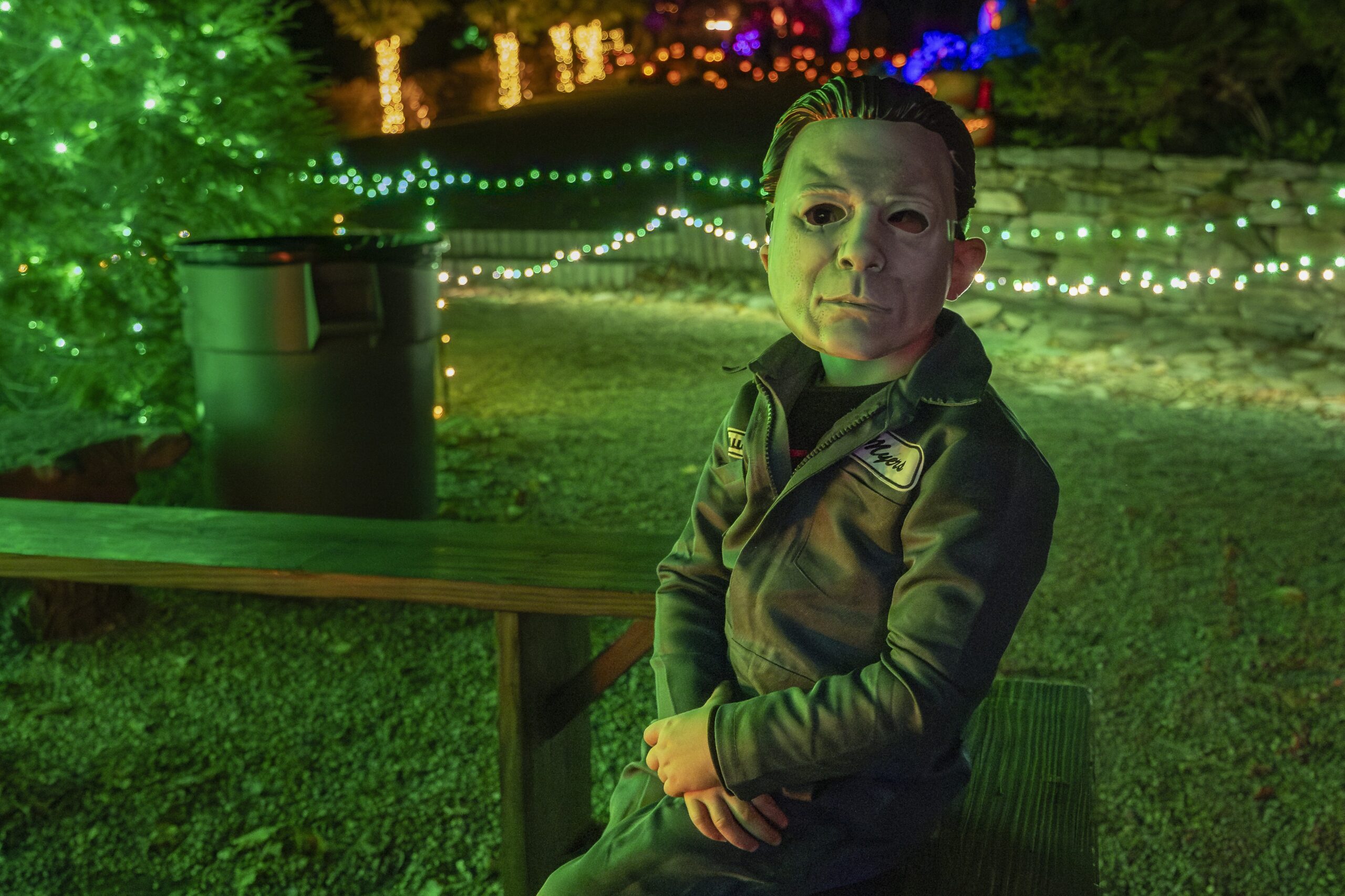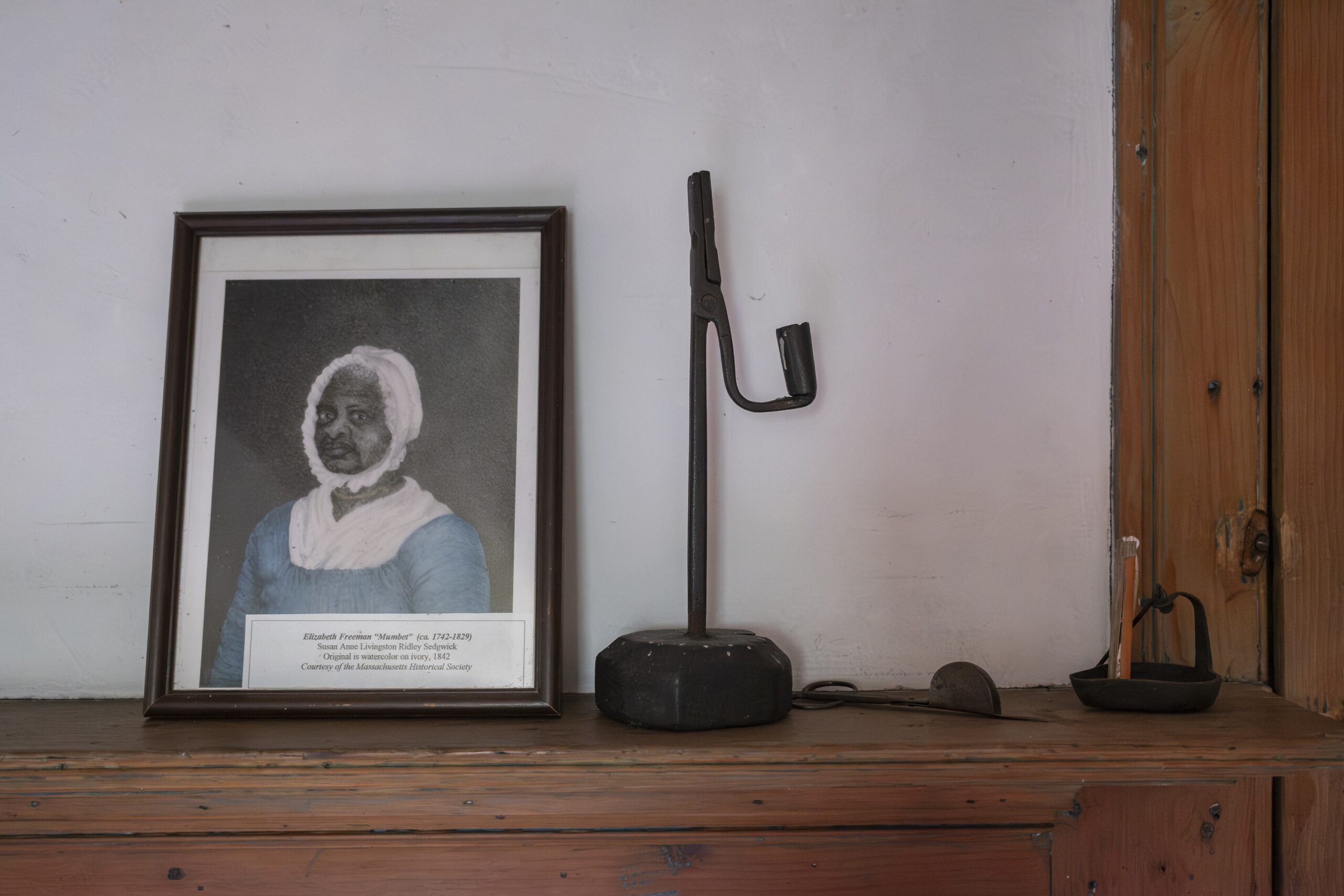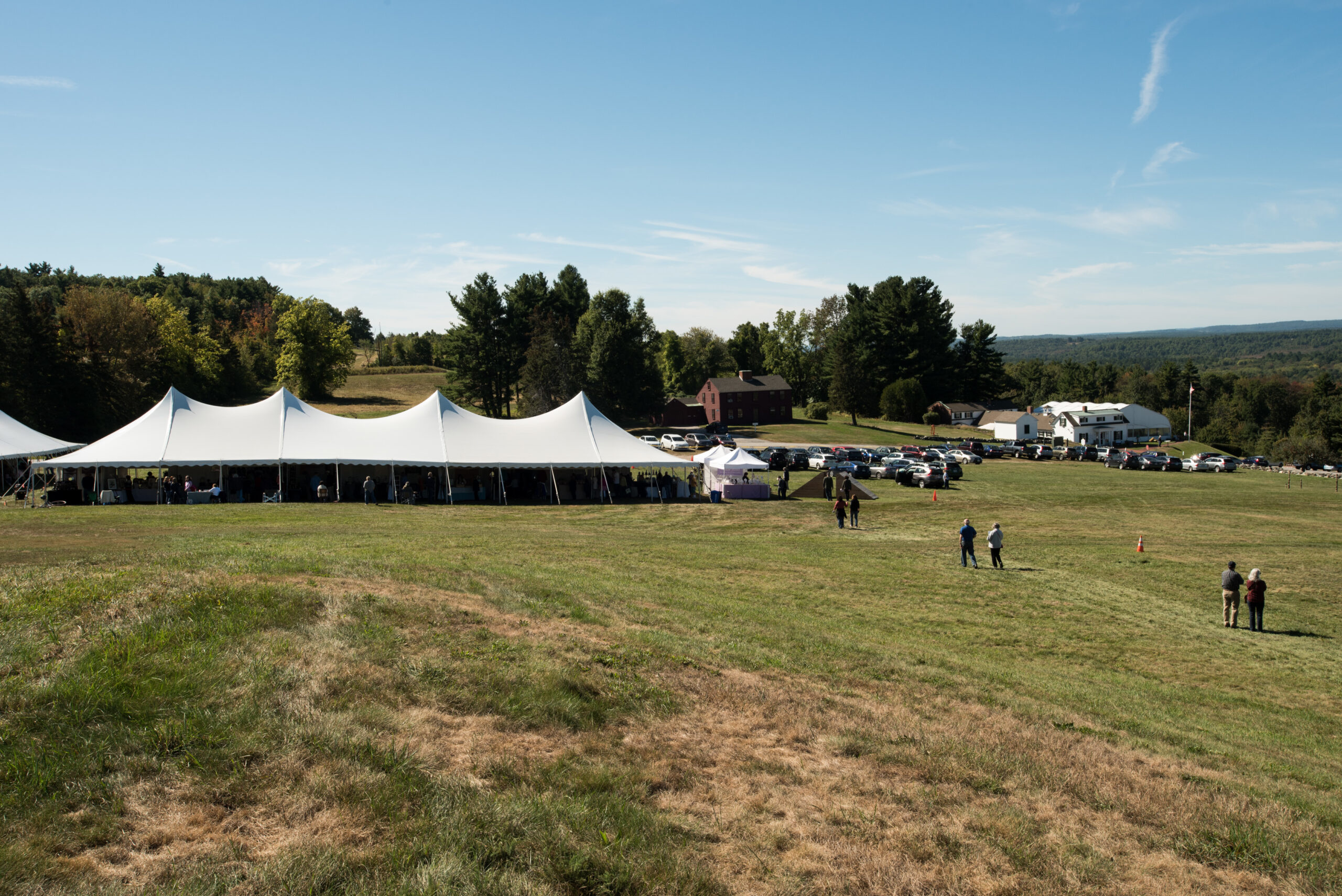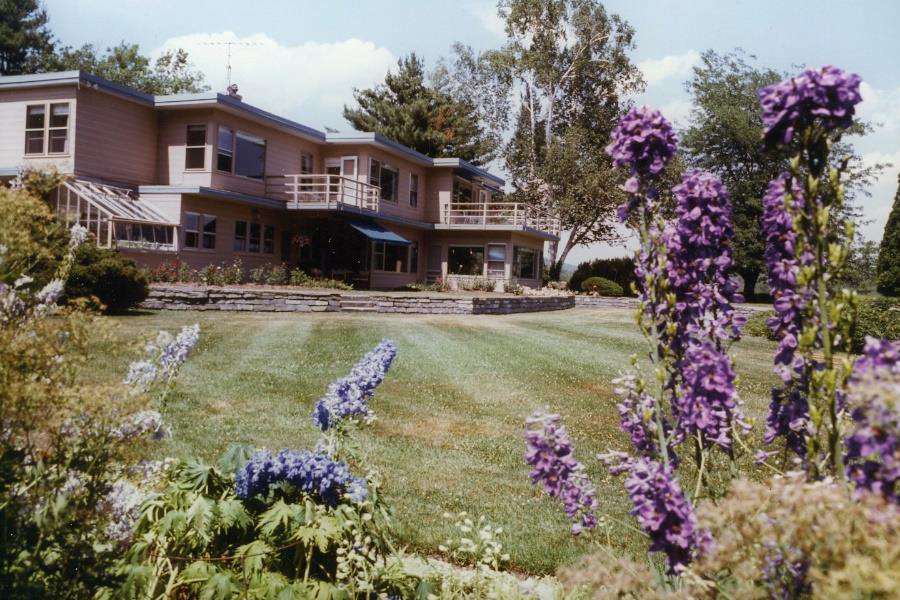
Field Farm exterior before 1985
On a narrow parcel of land sandwiched between two sides of Sloan Road in Williamstown sit a pair of mid-century Modern homes known for their clean lines, ample windows, and open floor plans designed to bring the outdoors in. They have long stood as understated icons of Modernist design, but now are the focus of renewed preservation efforts at The Trustees that underscore their cultural and historical importance.
“Field Farm retains its integrity of location, setting, design, materials, workmanship, and feeling more than most mid-century Modern Massachusetts properties,” said Cindy Brockway, Trustees Senior Managing Director of Cultural Resources. “The inherent genius of place is leveraged into its very design, creating an exceptional blend of building, landscape, and prospect unlike any other in the state.”
Three recently completed projects—and others still underway—are ensuring that this blend not only remains accurate to the designers’ intentions but is also preserved for future generations to enjoy. Key aspects of the landscape are being renovated, dilapidated building materials replaced, and integral architectural elements restored.
The Landscape
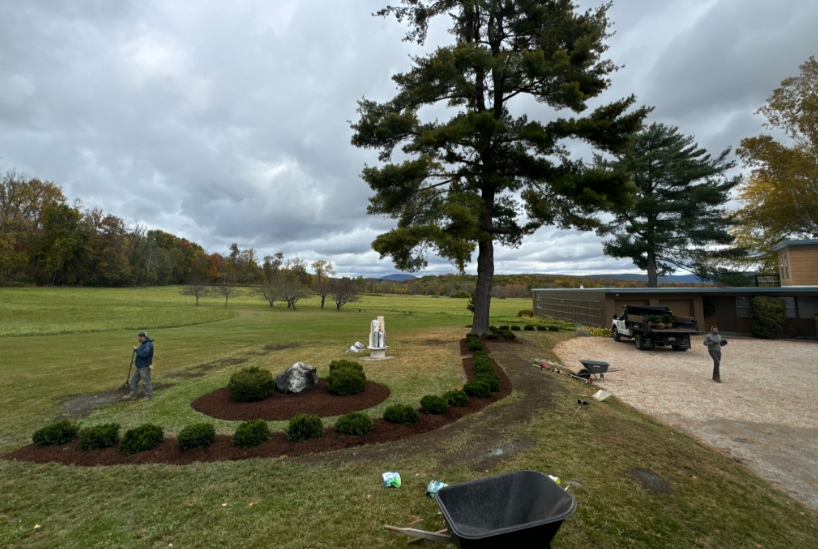
Memorial hedgerow restoration 2024
A key element of the mid-century Modern movement is how buildings are carefully positioned within the landscape to act as nature viewing platforms. Field Farm is no exception with its terrain specifically designed with the spectacular scenic surrounds as a center point. However, over the years, subtle changes and the natural progression of many of the original plantings have forced deviations from the designers’ intentions.
One such area was the stone memorial along the driveway of the Guest House. The fence surrounding the memorial was added in the late-1970s, replacing a hedgerow that ran along that edge of the driveway. With the help of historical photographs and archived blueprints from the original 1945–1965 plans, The Trustees mapped a restoration project for this area.
Last fall, that project went into action with the Trustees Stewardship Team removing the existing decorative steel fence around the stone memorial and laying out hedges. Plus, a Scarlet Oak was installed in its original location next to the garage, all per the historic plans.
“This is just one example of the work we’re doing to rejuvenate the landscape at Field Farm,” said Brockway. “We’re also restoring the entry court, the foundation plantings along the Guest House, the two perennial borders, and The Folly’s landscape, all in an effort to preserve and maintain the critical natural elements of this special place.”
The Folly
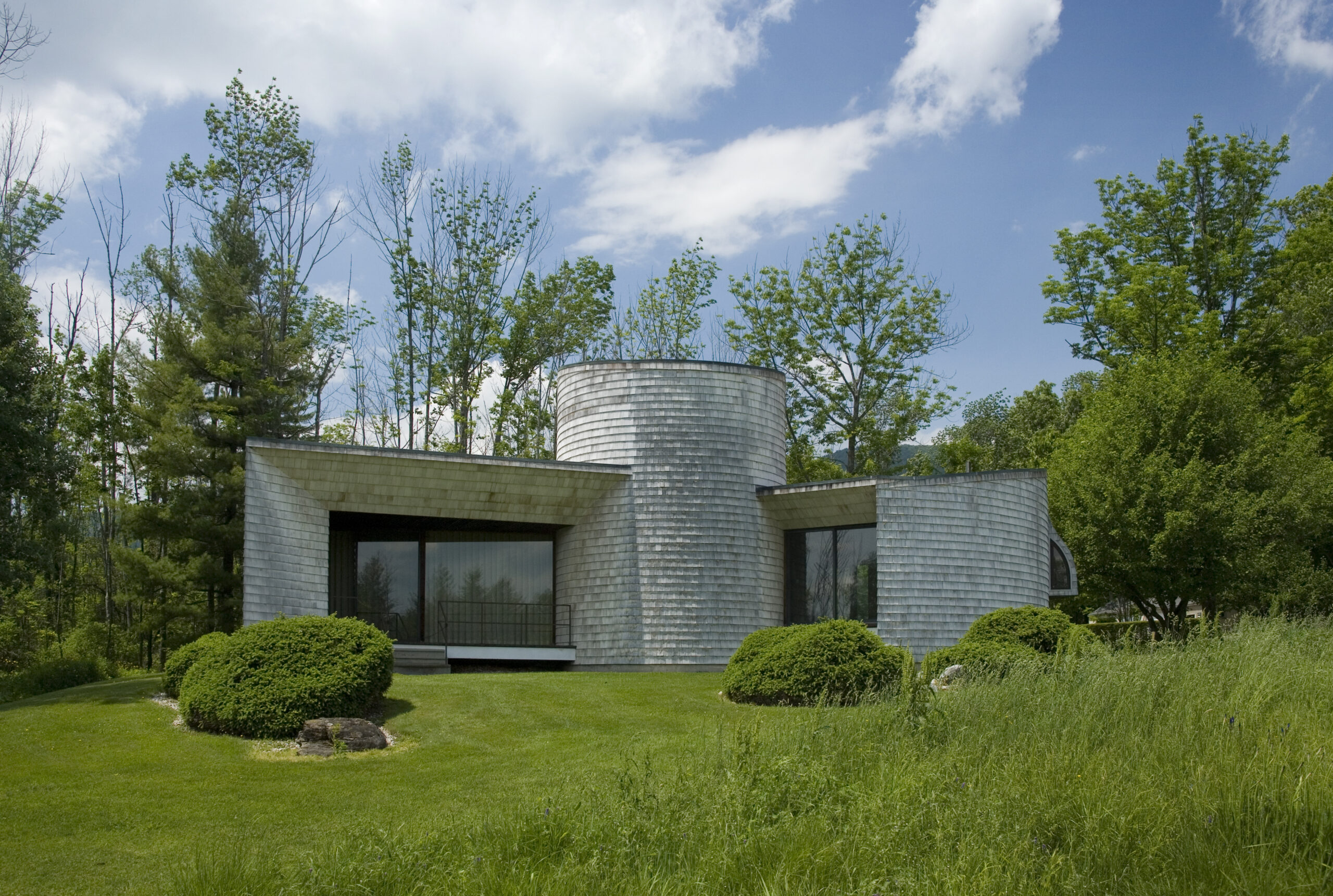
Folly circa 2005
Completed in 1965, The Folly is an outstanding example of mid-20th-century Modern American architecture designed by Ulrich Franzen as a guest house for the Bloedel family. Both the interior and exterior remain primarily intact to this day, although some elements of the roof—last replaced in 1998—and the shingled exterior corners were deteriorating.
When the elements neared the end of their life expectancy, The Trustees decided to undertake a complete overhaul of the roof and much of the decayed siding. A rubber membrane roofing system was installed across the seven unique roof areas with copper edging to match the original building specifications. Damaged shingles were replaced and a new exterior stain—with a uniform surface color as specified in the original designs—was added to prevent water infiltration. Plus, the entire southeast building corner was rebuilt after it was discovered to be completely degraded during the preliminary work.
“It was critical we renewed these areas before any catastrophic failure that could have caused damage to the interior of the building,” said Mark Wilson, Trustees Director of Historic Collections. “We were able to use modern materials that will not only provide long-term preservation of this historically significant structure but also keep with its architectural design.”
The Guest House
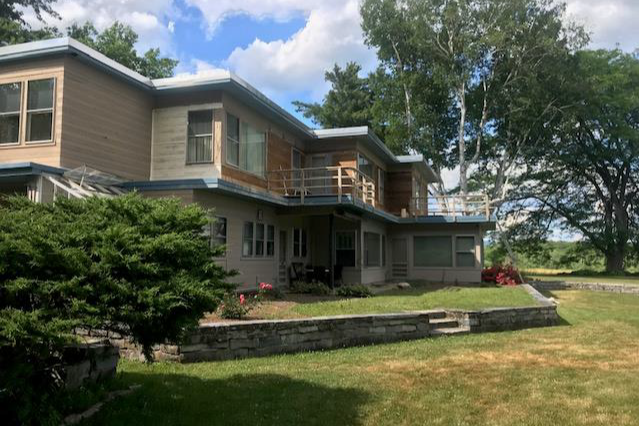
Field Farm exterior restoration 2020
Designed in 1948, the Guest House features modernist-international style with straight lines and extensive glass to take advantage of the sweeping mountain views. The building’s original cedar cladding—alternating flat and beaded boards—was finished with an oil-based material to maintain a natural wood tone. However, at some point in the building’s 75-year history the entire exterior was painted and lost much of its architectural detail.
When the paint was flagged as being in poor condition, The Trustees decided to restore the original design intention of the historic home’s exterior. Layers of latex paint were carefully stripped from the siding, damaged boards repaired, and a new stain material applied. Other exterior areas—such as the concrete walls—were also refinished with paint colors similar to those depicted in historic photographs of the home.
“Since the work has been completed, it looks like a completely different place,” said Wilson. “Now you can truly appreciate the architectural details of the home’s modern-international design style, which was the intention.”
Experience these resent restorations by visiting Field Farm for the day or staying overnight at the Guest House, the #1 Rated Bed & Breakfast in Williamstown!

